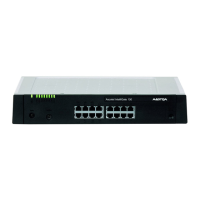System Functions and Features as of I7.9
26 Numbering Plan
syd-0200/3.0 – I7.9 – 11.2009
• DCT
1)
DECT radio system DCT 1800 (see "DCT terminals", page 28)
If an internal user is assigned a name, it allows:
• the user to be dialled internally by entering his name instead of the call number
(dialling by name) and
• the name to be displayed on the terminal of a destination user on the system’s
own PBX / PINX or on another PINX in the PISN (CNIP).
2. 2. 5. 2 IP terminals
The IP terminals are system terminals executed as pure software applications (soft-
phones) or as desktop phones (hardphones). A user can be assigned several hard-
phones, but only one softphone.
2. 2. 5. 3 DECT terminals
DECT terminals must be logged on to the system using a logon procedure. This is
done using the button Log on DECT terminal terminal configuration.
Only one DECT terminal can be assigned per user.
2. 2. 5. 4 GSM Terminals
Although the PBX does not have a GSM receiver, GSM terminals can be connected
to Ascotel® IntelliGate®. The GSM terminal is assigned to a user and can be reached
internally using his user number. If the user of the GSM terminal calls a call number
specially set up in the PBX, he can carry out certain */# procedures (see Tab. 356,
page 509) or make internal/external calls.
With the Aastra Mobile Client GSM application for certain GSM devices, all the main
telephony functions are available with menu prompting.
See also:
More detailed information on GSM integration can be found in the "Inter-
faces and Terminals" System Manual.
1)
Not possible on A150

